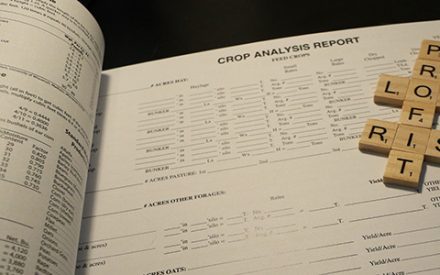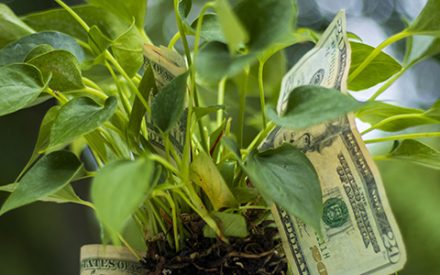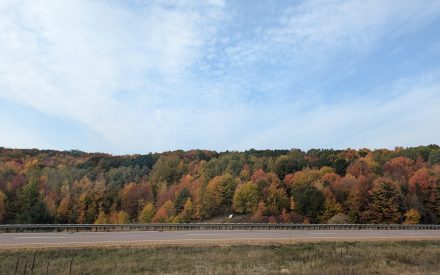Video Summary
In this video, Sam Bibby, regional crops educator, UW–Madison Extension, shares insights from on-farm research exploring the use of camelina as a cover crop compared to rye in corn-soybean rotations. Conducted through a SARE partnership grant, the study investigates camelina’s winter hardiness, nitrogen dynamics, and impact on corn yield.
Sam explains how resin pucks are used to monitor nitrate leaching and highlights preliminary results showing camelina’s potential to reduce nitrogen loss without negatively affecting corn yields. The presentation also includes practical tips for successful camelina establishment, herbicide considerations, and relay cropping with soybeans for seed production.
- Winter Camelina, UW–Madison Extension Emerging Crops
Transcript
0:05
Perfect.
0:05
Appreciate it, Jerry.
0:07
Yeah, we’ll try and keep it short and sweet and get us done by 1:30.
0:11
But what I wanted to talk about a little bit today was the some of the on farm research that we are doing myself and a couple other extension educators.
0:20
You can see there on the screen Will and Anastasia, we have a SARE partnership grant that we are working on to sort of investigate Camelina as a cover crop compared to rye, ahead of corn and after soybeans.
0:35
So, so get started here.
0:41
If you’re not familiar, camelina has a small seated brassica, so similar to canola, mustard, turnips, any of that.
0:49
It is a could be a annual or a winter annual.
0:53
There’s spring camelina and winter camelina usually here for our cover crop needs.
1:00
We want to plant that in the winter or I should say the fall and let it overwinter.
1:06
And it’s really going to be like the only option or maybe the best option for a winter Hardy broadleaf that we can plant after soybean harvest.
1:17
It’s really, it might not be quite on the same level as rye as far as winter hardiness goes, but it is pretty close.
1:23
I would say does a good job when you have the right variety.
1:27
That’s important that we’ll touch on in just a minute.
1:31
But the oil content is around 35 to 40%.
1:35
It’s got a really low carbon intensity score, which is why there’s a big push now for Camelina oil it gets pressed and turned into a sustainable aviation fuel I guess.
1:46
So that’s a be a growing market I guess, but we’re interested in it as a cover crop for this project because it has a lower carbon and nitrogen ratio than rye.
1:59
If we plant corn into it either green or shortly after termination, we won’t have a grass on a grass like we do with rye before corn.
2:08
So we have less disease concerns such as pythium and hopefully less of maybe that nitrogen tie up.
2:16
But that nitrogen tie up is you know sort of a benefit of rye as well, you know, prevents our nitrate leaching.
2:25
So we are sort of measuring some of that nitrate leaching underneath our rye and camelina treatments and that’s kind of part of the SARE Partnership project, as well as measuring the corn yield after both cover crops the following year.
2:43
So what we’re doing there for the nitrate leaching is using these resin pucks, little PVC containers that have sort of like a nitrate filtration resin, the same kind of stuff you would find in your home if you’re filtering nitrates out of your drinking water.
3:00
And we bury that underground roughly 2 feet down in the fall underneath the cover crop or bury it and then plant the cover crop.
3:10
Then we come back in the spring before we plant corn, dig them back up again and get them analyzed in the lab.
3:16
And we can get an idea, comparing one treatment to another, of how many pounds of nitrogen are either leaching out of the soil or not leaching out of the soil compared to the control or no cover crop control, I guess.
3:33
So we did.
3:35
We are currently in year one of our SARE partnership project, but we did sort of a preliminary study the year prior.
3:45
We didn’t have excellent success on all our plots for a variety of reasons, but we did have one very nice plot that went quite well.
3:55
You can kind of see the biomass difference there between camelina and we had a winter wheat cover crop instead of rye, but roughly half the biomass with the camelina.
4:04
So that’s a drawback as far as cover crops go.
4:07
But on the upside, the rye brought our corn yield down by roughly 26% while the camelina really didn’t affect it at all.
4:16
So we were pretty excited about that Year 2 or I should say year two of our experimenting with Camelina and year one of our SARE partnership project.
4:29
We added a drone seeded Camelina treatment that had pretty good success on most of our locations.
4:36
Luckily we did have a timely rain and some of the preliminary lysimeter results.
4:41
Those resin pucks are pretty positive.
4:44
So we’re we’re happy about that.
4:46
You can kind of see the Camelina that was drone seeded there.
4:51
That was a picture taken I think sometime in November.
4:56
That drone seeded stuff is quite far ahead of the rye and the Camelina.
5:02
And then on the right there you can see that’s kind of what it looks like when we’re no tilling corn into it on our Home Farm.
5:09
So not obviously a lot of data here, but if we want a couple of tips and tricks or if you want to just learn from our mistakes.
5:18
Joelle is sort of the vernal of the camelina world.
5:23
It is one of the older varieties, but it is proven itself to be probably the most winter Hardy variety available.
5:31
If you’re getting VNS, you really just don’t expect it to overwinter.
5:35
It might, but you could be getting spring camelina from Canada or somewhere else and it’s not going to overwinter, so be careful.
5:42
Herbicide carryover has been an issue for some of our plots.
5:46
We’ve learned that the hard way.
5:48
Some of the herbicides that we’re spreading on soybeans can be a problem for camelina, so do a bioassay.
5:57
Personally, we’ve had good luck on our farm if we’re just spraying a group 15 residual for our soybeans.
6:05
The Camelina doesn’t seem to be bothered by that or at least the one active ingredients that we’ve sprayed personally.
6:11
But bioassay would be a great plan.
6:15
Seed to soil contact is a big deal.
6:19
We’ve had good luck with like those John Deere single disk opener drills, like a 750 and relatively poor luck if your residue is spread out poorly or you’re using like not a no till drill, something like that.
6:35
So try to get the seed quarter inch in the ground, maybe even 1/2 inch and get it past that residue and then don’t plant too early.
6:45
If you’re planting before September 15th, you sort of risk the camelina bolting or sending up a stem and then having that stem freeze off in the winter and inevitably a winter kill.
6:57
So other than that, I did put a link in the chat.
7:02
We are having an agronomy and market opportunity workshop.
7:06
We’ll have Anna Teeter from Cargill.
7:09
They’re the folks really contracting maybe the most for oilseed production in Central Minnesota and now Western Wisconsin.
7:20
So if you want to come, feel free to register and show up.
7:25
We’d love to have you.
7:27
And with the last minute of my time, I was just going to highlight what we’ve done on our Home Farm.
7:32
We’ve been trying to grow camelina for seed because we like the idea of using it as cover crop, but the seed that we buy is, my opinion, too expensive.
7:41
So this is what our stand looked like in the spring.
7:47
We planted like 3 1/2 acres, I think, and then on part of that strip I went ahead and no tilled beans for sort of a relay crop right around, yeah, April 17th there.
8:01
So had a nice stand at Camelina.
8:04
The beans came through pretty nice.
8:06
You can see that picture on the right was taken sometime, I’d say middle of middle or late May.
8:15
Really no weed pressure at that time.
8:17
Looked pretty good.
8:19
And then this is what harvest looked like yesterday we were harvesting it did have some ragweeds come through, but really not enough to cause an issue with the combine and none of them are going to seed, so not too upset about that.
8:34
And then the seed on the right is sort of what it looks like.
8:38
Well, the dirtier stuff is obviously coming out of the combine and the clean stuff is after the grain cleaner.
8:43
But certainly some combine adjustments you could make, fixed whole sieve would be a big one that we’d like to try.
8:51
But we did have success.
8:53
You know, that’s what we’re excited about.
8:55
If you’re not familiar, I mean, obviously camelina is a brassica and it’s not what you would call a small grain, but it is arguably the smallest grain that you can harvest is about the same size as sand.
9:10
So there’s a lot of duct tape on the combine when we were done.
9:15
Other than that, I guess I hit our time limit right on the mark.
9:19
And if you want any more information on Camelina or you just want to chat, feel free to reach out.
9:24
And I think that is about it.
Badger Crop Connect
Timely Crop Updates for Wisconsin
Second and fourth Thursdays 12:30 – 1:30 p.m.
Live via Zoom

 ▶ Fall 2025 Financial Assistance for Producers
▶ Fall 2025 Financial Assistance for Producers ▶ Fall 2025 Ag Policy Update
▶ Fall 2025 Ag Policy Update ▶ Fall 2025 Corn and Soybean Market Outlook
▶ Fall 2025 Corn and Soybean Market Outlook ▶ November 6 Ag Weather Outlook for Wisconsin
▶ November 6 Ag Weather Outlook for Wisconsin


